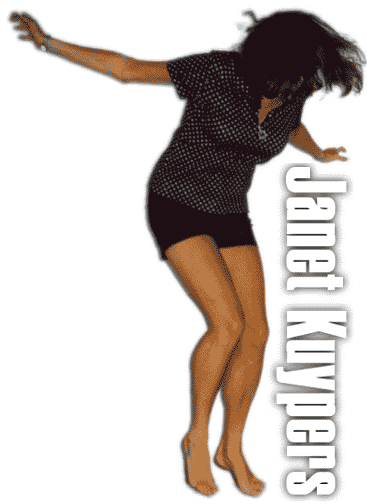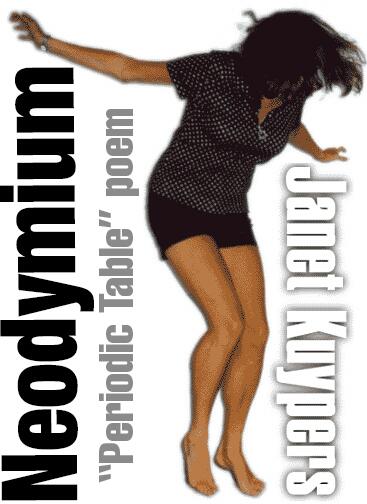Chromium
Janet Kuypers

from the “ Periodic Table of Poetry” series
Closing the door
to my stainless steel refrigerator,
I thought about the popularity
of stainless steel;
everyone wants to get
stainless steel fronts
for all of their kitchen appliances.
Costs more at the store,
but that’s the price for looking good.
So I thought, stainless steel,
okay, what is that, iron?
But my wrought iron bed frame
and sets of candle holders
are pretty much black,
some of it’s rusting,
so what do they do
to make this iron a shiny,
different kind of metal?
I looked online
and the answer
was 24.
Not 42, not the meaning of life,
but the atomic number.
You know, when I turned 24 at work,
our rep from our press called me,
and I told him it was my birthday.
So he asked me how old I was,
and I said 42.
He sounded surprised, so I told him,
“Oh, you didn’t ask me
how old I felt.
I’m 24.”
But really, chromium
is atomic element number 24,
and to make stainless steel
they add over ten percent
of chromium to the iron to form
a steel alloy that doesn’t corrode.
(Good thing
my refrigerator
won’t rust…)
So maybe it’s the
magnetic properties of chromium
that make this metal so appealing
to people now…
But this protective element
has protected weaponry
from Chinese dynasties
thousands of years ago,
so the Chinese knew,
even then,
that coating things with
this magnetic metallic element
would stop corrosion.
I mean, we’ve all heard
of things that are
chrome plated, right?
Chromium not only makes things
last longer, but
chromium is also known for
its luster when polished —
which really makes
for a great sell.
Just go to any hangout
for motorcyclists,
probably on any summer
Sunday morning,
and see the parked line-up
of one motorcycle after another,
each outdoing each other
with decorative chrome plating…
But then I thought…
Chromium’s even used
as chrome yellow dye
for school buses…
Chromium salts are used
for wood preservatives
and tanning leather…
The refractory applications
of chromium even work
for blast furnaces, cement kilns,
molds for the firing of bricks
and also for the casting of metals.
I guess chromium can really
extend the life
of what we see around us…
So I guess it’s fitting
that when my birthday
coincided with this element,
I jokingly said
that the number in question
was actually the answer
to life, the universe,
and everything…



